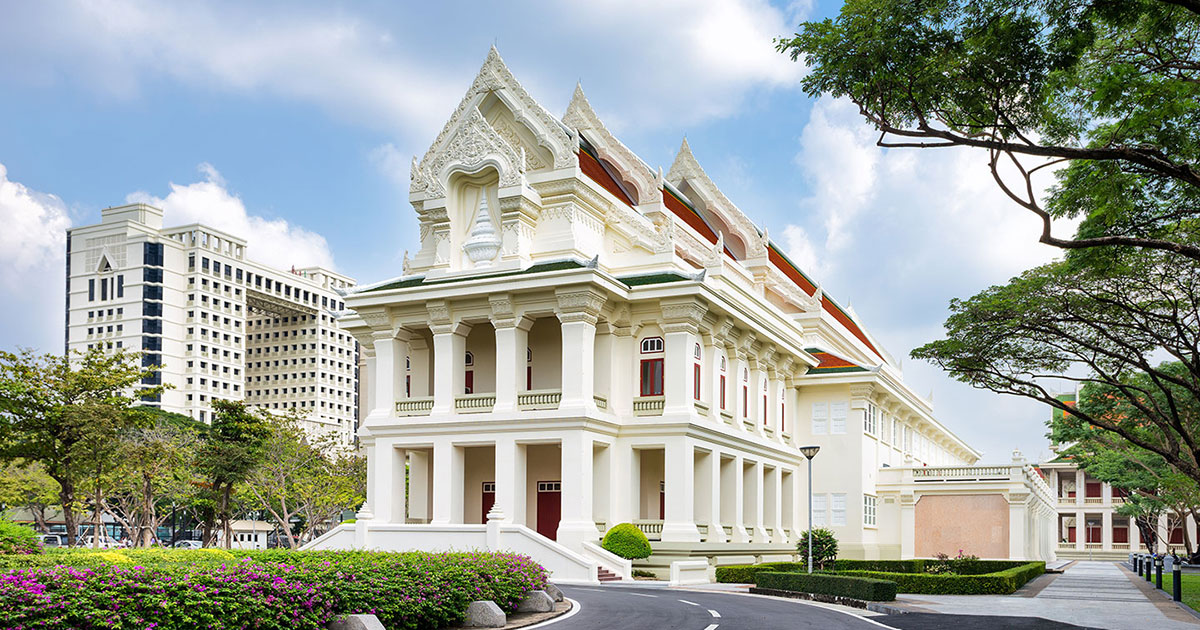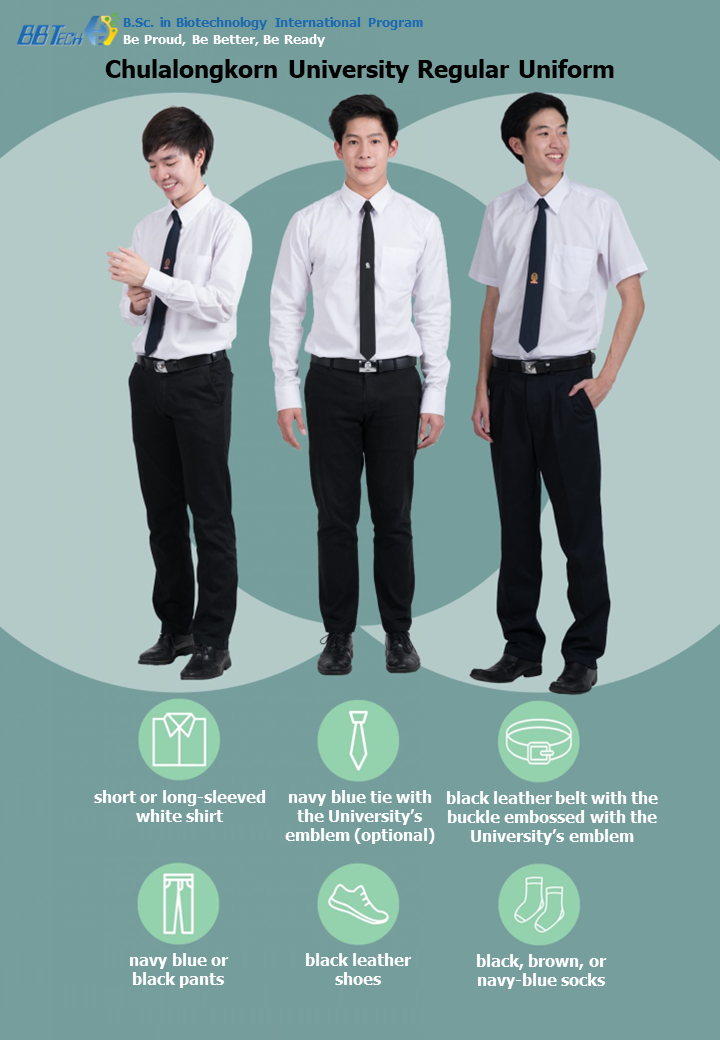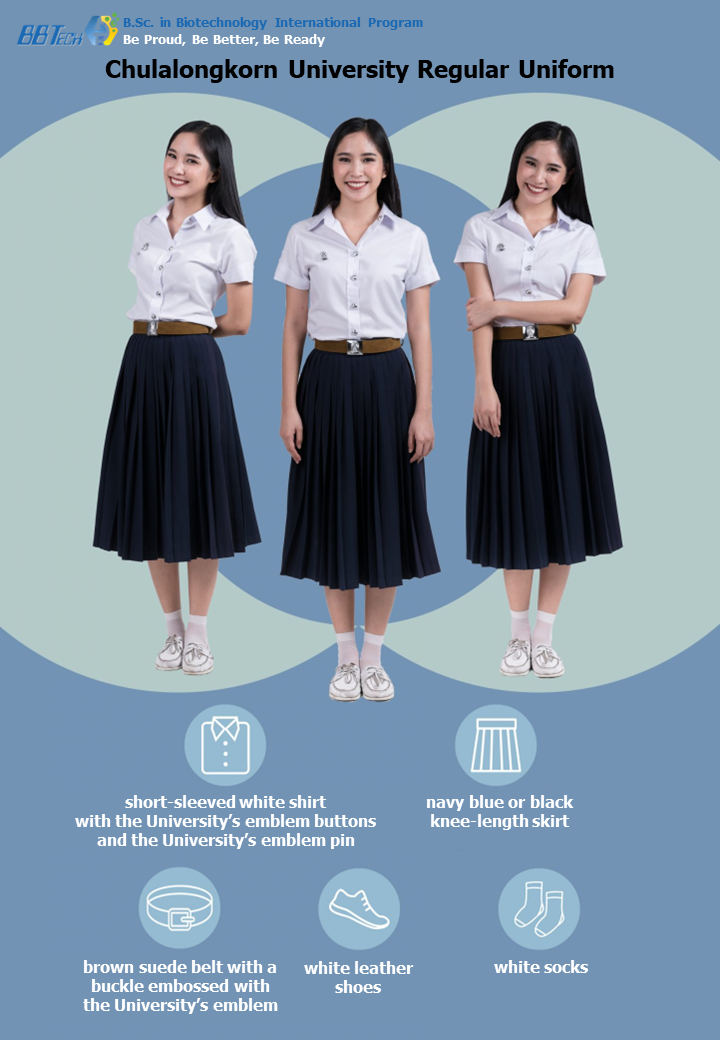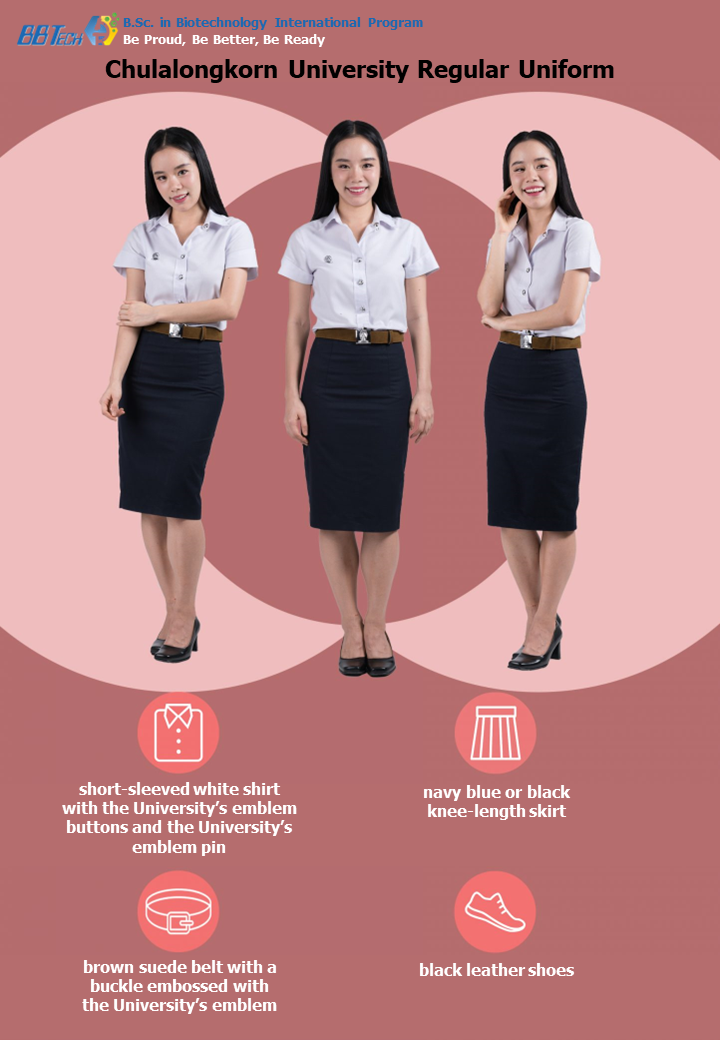
_____
_____
Regulation
- Chulalongkorn University Regulations on Higher Education Studies B.E. 2566 (Thai Language)
- Chulalongkorn University Regulations on Undergraduate Studies B.E. 2565
- Chulalongkorn University Regulations on Undergraduate Studies B.E. 2565 (Thai Language)
- Chulalongkorn University Regulations on Uniforms, Emblems and Student Dress Code B.E. 2562
- Chulalongkorn University Regulations on Uniforms, Emblems and Student Dress Code B.E. 2562 (Thai Language)
- Chulalongkorn University Regulations on Awarding of the Honors Degrees B.E. 2552
- Chulalongkorn University Regulations on Awarding of the Honors Degrees B.E. 2552 (Thai Language)
Announcement
- Announcement of Chulalongkorn University on Student Dress Code B.E. 2562
- Announcement of Chulalongkorn University on Student Dress Code B.E. 2562 (Thai Language)
- Announcement of Chulalongkorn University on Examination Practice for Students B.E. 2564
- Announcement of Chulalongkorn University on Examination Practice for Students B.E. 2564 (Thai Language)
_____
Student Dress Code
Student dress code for various occasions is as follows:
(1) In royal ceremonies or state ceremonies, students dress as specified in the schedule, or order of the university.
(2) In class attendance
Undergraduate students typically wear regular uniforms unless their instructor requires them to wear polite clothes, as instructed by the Dean. Exceptions apply to undergraduate students in programs that only accept bachelor’s degree graduates, who are required to dress in polite clothes.
(3) In the examination
Undergraduate students wear regular uniforms. Exceptions apply to undergraduate students in programs that only accept bachelor degree graduates, who are required to dress in polite clothes.
(4) To contact the university departments and offices
Undergraduate students dress in regular uniforms or polite clothes.
(5) For participation in various university activities, with no additional dress code requirements, students can dress in general attire such as sleeveless shirts, skirts, or pants that do not look precarious or expose their bodies too much in a manner that is considered inappropriate for civilians.
Regular uniform, ceremonial uniform or state ceremony, and formal uniform shall be enforced with undergraduate students.
Students may wear the uniform as described above according to their birth sex or gender expressed.
Regular uniform for male students:
(1) White shirt with a collar and sleeves, without patterns and not tight fitting, with white buttons. The length of the shirt should extend beyond the waist and must be kept tucked into the pants at all times.
(2) International pants shall be made of navy or black fabric, not shiny, and without patterns. Denim, flannel, or corduroy must not be used.
(3) Socks that are above ankle length, black, dark brown or navy.
(4) Black closed-toe shoes without open-toe.
(5) Black leather belt 3 centimeters wide with a silver metal rectangular shaped buckle, 3.5 centimeters wide and 5 centimeters long, with university emblems embossed on it according to the university.
(6) In case of a tie, use a navy or black tie with the university’s emblem.
Regular uniform for female students:
(1) White shirt, without a pattern, the fabric is quite thick. The shirt is loose, and the size is appropriate, beautiful, and not too tight. Pointed shirt collar that is moderately long and welt along the edge of the collar. The length of the shirt should extend beyond the waist and must be kept tucked into the skirt. The shoulder length should be optimal, and the back of the shirt at the middle should have a pleat of 3 centimeters. In addition, the front of the shirt should have a pleat of 3 centimeters, with 5 metal emblems representing the university. The short sleeves should extend to 6 centimeters below the elbow. At the end of the sleeve, there should be an additional cuff layer extending 3 centimeters on the forearm and 6 centimeters on the back of the arm. Double seam throughout the shirt. The shirt should have a double seam throughout.
(2) The skirt should be made of navy or black fabric without a pattern, and should not be shiny. It can be pleated or plain but should not have a slit unless it is a straight-cut skirt with a slit at the back where the pleats overlap. The length of the skirt should be between the knee and ankle at the waist level. Denim fabric, flannel fabric, corduroy fabric, stretch fabric, lace fabric, or velvet fabric should not be used.
For first-year students, use a pleated skirt.
(3) The emblem of Phra Kiao, as designated by the university, should be painted in silver metal and be three centimeters high. It should be adorned on the right breast of the uniform.
(4) The belt should be made of dark brown felt or nubuck and should be 3.5 centimeters wide. It should have a drawstring, with a pointed end, and the belt buckle should be made of silver metal in the shape of a square, measuring 4 centimeters. The emblem of Phra Kiao should be on the belt buckle. The belt should be tied over the middle of the skirt and the shirt.
(5) The shoes should be closed-toe or have heel straps and should not be open-toe or have a wedge. They should be black, white, brown, navy blue, or gray.
For first-year students, plain white closed-toe shoes without an open toe or wedge should be worn. White socks that extend above the ankle should be worn with the shoes.
In the case of Islamic female students, may dress as regular uniform but are allowed to have the following characteristics:
(1) Shirt, the sleeves are long. The end of the sleeve is buttoned.
(2) Skirt, the length of the skirt is at the ankle.
(3) White headscarf without a pattern.
(4) The university’s emblem adorned on the shirt or headscarf that can be seen on the right side of the chest.
Ceremonial or state ceremonial uniforms for male students:
(1) The shirt should be white with a Raj pattern, have a stand collar, and have long sleeves. It should have pockets on the left and right chest, as well as on the left and right waist. The emblem of Phra Kiao, as designated by the university, should be painted in silver metal and be two centimeters high. It should be adorned on the placket in front of the uniform.
(2) The felt or velvet mane of the shirt should be attached to the collar on both sides. The color of the mane should match the color of the faculty. The mane should be rectangular with the end cut into the shape of a pennant. Each side should be 4.5 centimeters wide and 12 centimeters long. In the center of the length of the mane, there should be a one-centimeter-wide gold stripe with an emblem of Phra Kiao. The emblem should be painted with silver metal and should be 3.5 centimeters tall. It should be mounted on the gold stripe in the center of the mane.
Faculty colors are as follows:
Faculty of Science [Yellow]
Students working for the student club may use a pink mane.
(3) White long pants should be worn, which are not shiny and without patterns. Denim fabric, flannel fabric, and corduroy fabric should not be used.
(4) Socks that are above the ankle, all black.
(5) Black leather shoes with no pattern and no open toe should be worn.
Ceremonial or state ceremonial uniforms for female students:
It has the same characteristics as the regular uniform for female students, including fastening the button at the neckline of the shirt, wearing a navy-blue skirt, and black leather shoes with no patterns and no open toes. For first-year students, plain white closed-toe shoes without an open toe or wedge should be worn. White socks should be worn as the regular uniform.
Formal uniforms for male students:
It has the same characteristics as the regular uniform for male students, changing white pants, wearing white leather shoes with no patterns and no open toes, and a tie with the university-designated emblem of Phra Kiao.
Formal uniforms for female students:
It has the same characteristics as ceremonial or states ceremonial uniforms.
Dressing in polite clothes as the following characteristics:
(1) Male students consist of:
(A) Shirts with sleeves, do not wear T-shirts without collars and tuck the shirttail into pants, royal shirt, or inspector shirt (safari shirt), button up neatly.
(B) Long pants, not too tight and not exposing the torso in a manner that is inappropriate for civilians.
(C) Heel-covered shoes or heel-strap shoes and not slippers.
(2) Female students consist of:
(A) Shirts with sleeves, not tight, do not wear T-shirts without collars or cropped tops.
(B) Knee-length skirts or long pants, not too tight and not exposing the torso in a manner that is inappropriate for civilians.
(C) Heel-covered shoes or heel-strap shoes and not slippers.
Students may wear polite clothes as described above according to their birth sex or gender expressed.
Regular Uniform



